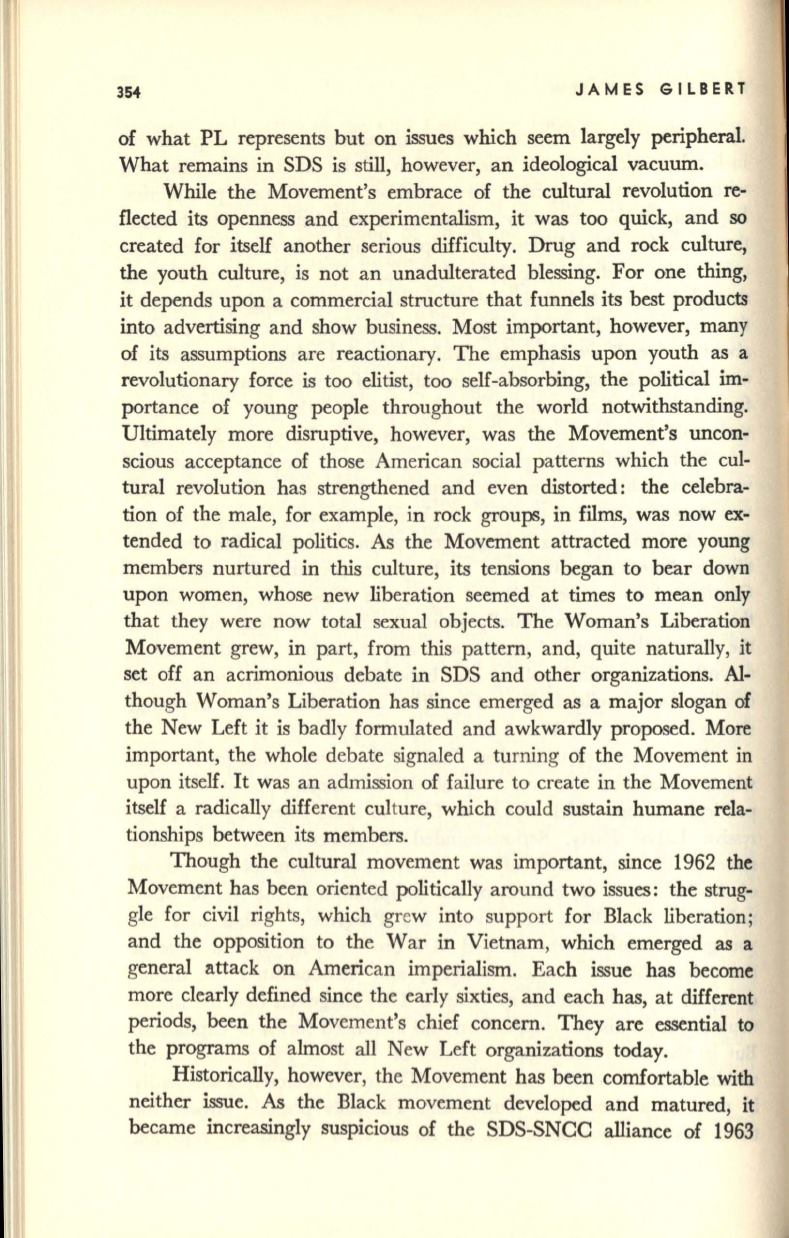
354
JAMES GILBERT
of what PL represents but on issues which seem largely peripheral.
What remains in SDS is still, however, an ideological vacuum.
While the Movement's embrace of the cultural revolution re–
flected its openness and experimentalism, it was too quick, and so
created for itself another serious difficulty. Drug and rock culture,
the youth culture, is not an unadulterated blessing. For one thing,
it depends upon a commercial structure that funnels its best products
into advertising and show business. Most important, however, many
of its assumptions are reactionary. The emphasis upon youth as a
revolutionary force is too elitist, too self-absorbing, the political im–
portance of young people throughout the world notwithstanding.
Ultimately more disruptive, however, was the Movement's uncon–
scious acceptance of those American social patterns which the cul–
tural revolution has strengthened and even distorted: the celebra–
tion of the male, for example, in rock groups, in films, was now ex–
tended to radical politics.
As
the Movement attracted more young
members nurtured in this culture, its tensions began to bear down
upon women, whose new liberation seemed at times to mean only
that they were now total sexual objects. The Woman's Liberation
Movement grew, in part, from this pattern, and, quite naturally, it
set off an acrimonious debate in SDS and other organizations. Al–
though Woman's Liberation has since emerged as a major slogan of
the New Left it is badly formulated and awkwardly proposed. More
important, the whole debate signaled a turning of the Movement in
upon itself. It was an admission of failure to create in the Movement
itself a radically different culture, which could sustain humane rela–
tionships between its members.
Though the cultural movement was important, since 1962 the
Movement has been oriented politically around two issues: the strug–
gle for civil rights, which grew into support for Black liberation;
and the opposition to the War in Vietnam, which emerged as a
general attack on American imperialism. Each issue has become
more clearly defined since the early sixties, and each has, at different
periods, been the Movement's chief concern. They are essential to
the programs of almost all New Left organizations today.
Historically, however, the Movement has been comfortable
with
neither issue.
As
the Black movement developed and matured, it
became increasingly suspicious of the SDS-SNCC alliance of 1963


